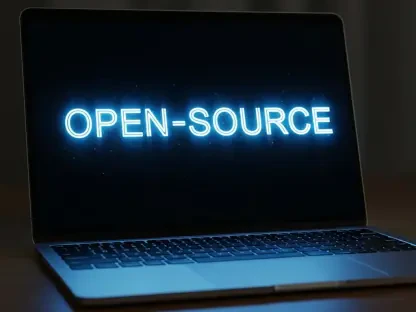I’m thrilled to sit down with Anand Naidu, our resident development expert with a deep mastery of both frontend and backend technologies. Anand has been closely following the intersection of AI and retail, and today, we’re diving into the innovative “Ask Ralph” AI shopping tool, a collaboration between Ralph Lauren and Microsoft. In this conversation, we’ll explore how this conversational AI stylist enhances the shopping experience, the technology behind it, and its impact on customers. We’ll also touch on the broader potential of AI in personalizing retail and product discovery.
How did the idea of creating “Ask Ralph,” a conversational AI shopping tool, come about for Ralph Lauren in partnership with Microsoft?
The concept for “Ask Ralph” stemmed from a desire to bridge the gap between the in-store personal styling experience and the digital world. Ralph Lauren wanted to replicate the feeling of walking into one of their stores and having a stylist guide you through curating a look. By partnering with Microsoft, we saw an opportunity to leverage AI to make online shopping more interactive and intuitive. It was about addressing a key pain point—customers often know what they like but struggle to put together a complete outfit or find complementary pieces. The idea was to create a tool that feels like a conversation with a knowledgeable friend who understands the brand’s aesthetic.
Can you walk us through how “Ask Ralph” works when a customer seeks styling advice, like finding a match for a specific item?
Absolutely. Imagine a customer using the Ralph Lauren app in the U.S. and typing something like, “What goes with these navy sneakers?” “Ask Ralph” processes that natural language input and responds conversationally, suggesting items like a pair of chinos or a casual polo shirt from the current inventory. It’s designed to mimic a real stylist by offering tailored suggestions. The interaction is seamless—you can keep asking follow-up questions, and the tool refines its recommendations based on your feedback or additional details you provide. It’s all about making the experience feel personal and effortless.
What elements of “Ask Ralph” make it feel like interacting with a personal stylist you’d meet in-store?
A big part of it is the tool’s ability to interpret not just the words, but the tone and intent behind a customer’s query. For instance, if someone sounds casual or urgent, “Ask Ralph” adjusts its responses accordingly. It also picks up on contextual clues—if a customer mentions shopping for a wedding or a beach trip, or if the system detects their location, it can tailor suggestions to fit the occasion or even local weather trends. This kind of adaptability mirrors how a human stylist would read a customer’s needs and preferences during a face-to-face chat.
How does the AI behind “Ask Ralph” determine which Ralph Lauren products pair well together?
The system draws from a variety of data points to make those decisions. It looks at commonly purchased combinations, curated looks defined by the brand’s style experts, and even search patterns from other users. While the exact recipe is a bit of a black box, the goal is to align with Ralph Lauren’s signature aesthetic while still offering relevant suggestions. It’s not just about pushing what’s popular—it’s about creating a cohesive look that feels true to the brand. That said, there’s always a balance between iconic Ralph Lauren style and a touch of personalization based on the user’s input.
What specific aspects of Microsoft’s Azure OpenAI technology were crucial in bringing “Ask Ralph” to life?
Azure OpenAI was a game-changer for this project because of its strength in natural language processing. It allows “Ask Ralph” to understand and respond to casual, conversational prompts in a way that feels human. Beyond that, its ability to handle large datasets means the tool can quickly cross-reference inventory, style trends, and user context to deliver precise recommendations. The scalability of Azure also ensures that as more customers use the tool and more data comes in, the system can adapt and improve without missing a beat.
What kind of feedback have you seen from customers using “Ask Ralph” through the Ralph Lauren app?
The response has been overwhelmingly positive. Customers appreciate how easy it is to get styling advice without needing to browse endlessly through product pages. We’ve noticed a trend of people asking for occasion-based recommendations, like outfits for a date night or a business meeting. What’s been surprising is how some users treat it almost like a creative partner—asking for bold or unexpected pairings that push beyond their usual style. It’s exciting to see how much trust they’re placing in the tool to guide their choices.
In what ways does AI elevate the shopping experience compared to more traditional online or in-store methods?
AI brings a level of personalization and efficiency that’s hard to match with traditional methods. Unlike a static website or even a human stylist with limited time, “Ask Ralph” can instantly process a huge range of variables—your preferences, current trends, inventory availability, and even subtle contextual cues. It saves customers time by narrowing down options to what’s most relevant, and it can do this at scale for thousands of users simultaneously. Plus, it’s accessible 24/7, which adds a layer of convenience that even the best in-store experience can’t always offer.
What’s your forecast for the role of AI in shaping the future of retail and customer experiences?
I think AI is only going to become more integral to retail. We’re just scratching the surface with tools like “Ask Ralph.” In the coming years, I expect AI to drive hyper-personalized experiences, where every interaction feels uniquely tailored—not just in styling, but in product recommendations, customer service, and even inventory management. We’ll likely see AI integrating more with augmented reality, letting customers virtually try on outfits or see how furniture fits in their home. The potential to blend creativity with data-driven insights is limitless, and I believe it will redefine how brands connect with their audiences on a deeply individual level.








